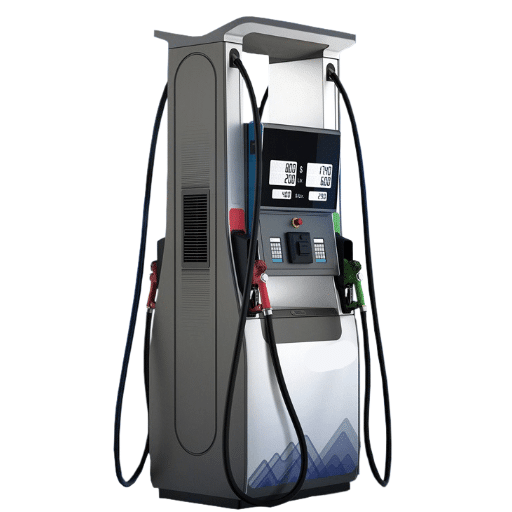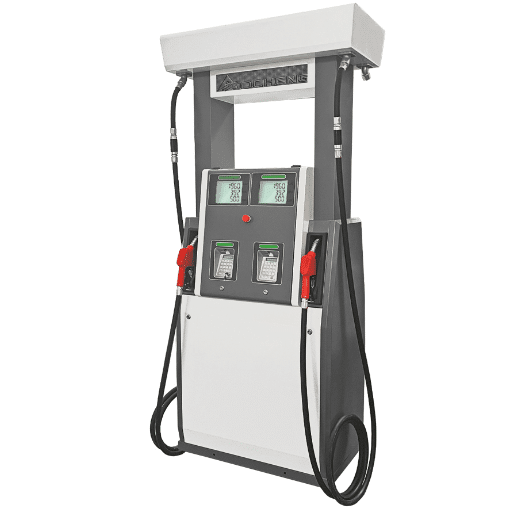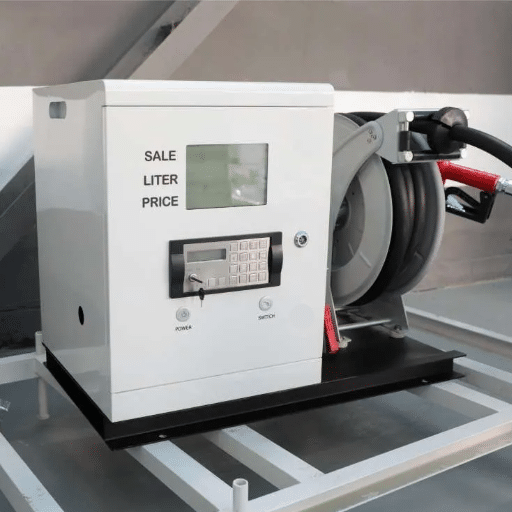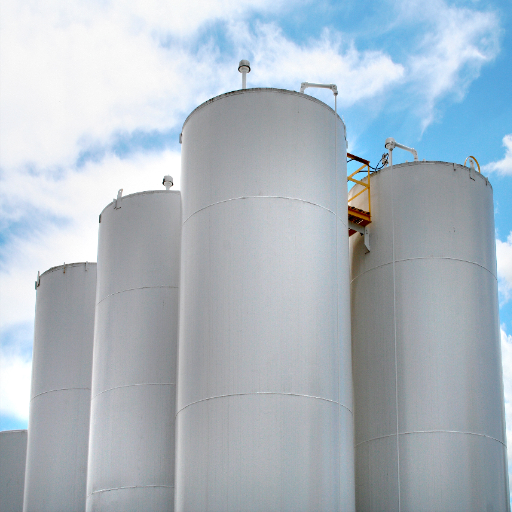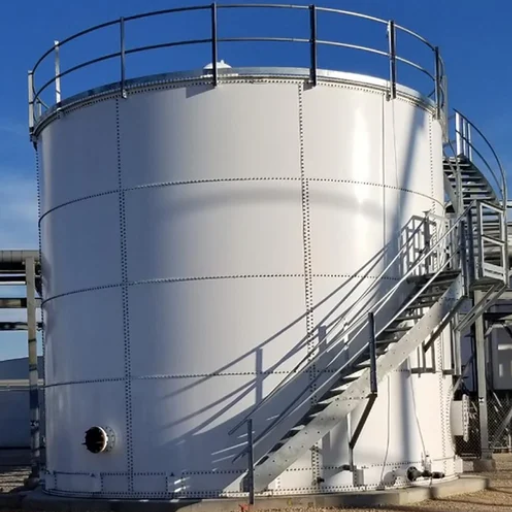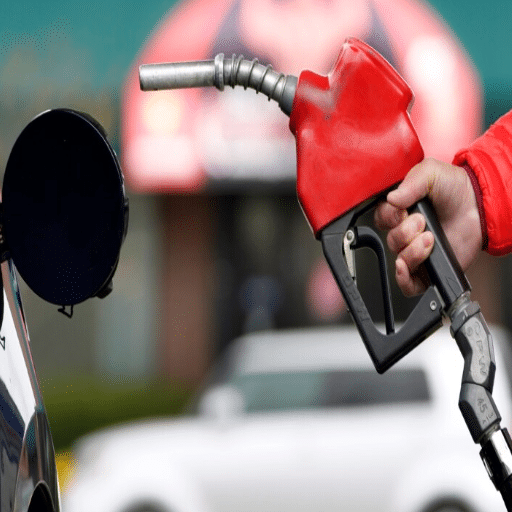For refueling, the procedure seems pretty simple, but have you ever considered how the pump knows when to stop dispensing fuel? That is an action we take for granted behind a very efficient and precise mechanism. Knowing the exact workings of the pump system not only satisfies our curiosity but also to appreciate the advancements in engineering that provide us with convenient modern life. In this article, we explore the science behind the fuel pump shutoff systems, as well as the technology behind them, and attempt to uncover the main components and processes that make these systems work so well. From a driver’s perspective, this insight into something so ordinary will make us realize how much thought is put into the very minutest details in the modern world.
Understanding the Fuel Pump Mechanism
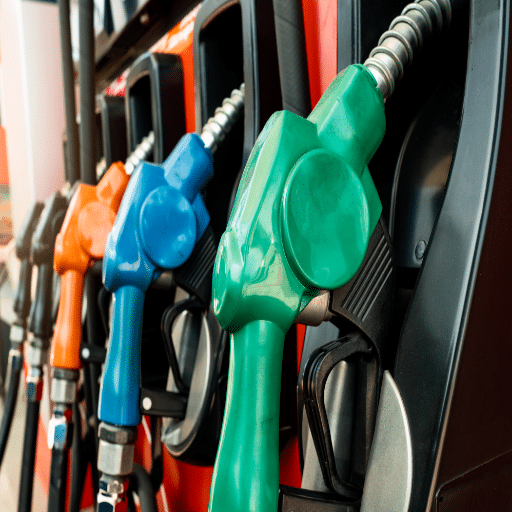
In a vehicle, the fuel pump serves as a critical part as it transfers fuel from the tank to the engine at an adequate pressure for combustion. Most electric pumps in modern cars are found inside the fuel tank to keep efficiency and safety levels high. The pump draws fuel through a strainer and pushes fuel through the fuel lines to the engine. An inline pressure regulator maintains proper fuel pressure, or else the engine might get too much or too little fuel, resulting in performance issues. By maintaining enough fuel flow and pressure, the pump ensures smooth motion and smooth operation of engines.
What is a Fuel Pump?
The fuel pump is the most critical part of a vehicle’s fuel delivery system, transferring fuel from the tank to the engine at proper pressures for combustion. Present-day vehicles predominantly utilize electric fuel pumps mounted in the fuel tank to ensure maximum efficiency and safety. These pumps suck fuel through a strainer and through fuel lines to the engine, where the regulator maintains pressure at a constant value. A stake on the correct working of the fuel pump as it infuses the engine with adequate fuel for optimum performance, which prevents the engine from stalling, and aids in emission control. Without an operative fuel pump, an engine cannot get fuel to run and would, therefore, lose performance or stop working.
How Does a Fuel Pump Work?
The job of a fuel pump is to deliver the specific quantity of fuel required for the engine, so it turns out at its best. As per the automobile type, it can either work mechanically or electrically. Usually, the mechanical fuel pump is through camshaft action and pulls fuel from the tank. The electrical fuel pump, common in modern vehicles, uses an electric motor to pressurize fuel through fuel lines up to the injectors.
Fuel pumps pull fuel through a strainer-blocking debris and contaminants. From there, the fuel line runs it under pressure into the engine. Pressure is further regulated so that the fuel pressure does not exceed or go below the parameter within which the engine must be so as not to be over- or under-fueled. Some newer electric fuel pumps are equipped with sensors and control modules to give feedback to the engine electronic control unit (ECU) so that fuel delivery can be adjusted precisely as per actual engine conditions. This helps maintain engine performance, fuel efficiency, and emission control. If the fuel pump does not work properly, the engine may misfire or accelerate poorly, or it may simply refuse to come alive.
Key Operating Principles
- Mechanical Operation: Driven by camshaft action in older vehicles
- Electric Operation: Uses electric motors for precise fuel pressurization in modern vehicles
- Filtration: Strainers block debris and contaminants before fuel enters the system
- Pressure Regulation: Maintains optimal fuel pressure for engine requirements
- ECU Integration: Sensors provide real-time feedback for precise fuel delivery adjustments
The Role of Sensors in Fuel Delivery
The sensors became critical in ensuring optimum fuel delivery as they give continuous feedback to the ECU. The important sensors in this process would be the mass airflow sensor (MAF), oxygen sensor (O2), throttle position sensor (TPS), and fuel pressure sensor. The MAF measures the quantity of air entering the intake manifold, based on which the ECU computes the amount of fuel required for ideal combustion. The oxygen sensor checks for excess oxygen in the exhaust and allows for fine adjustment of the air-fuel ratio for best conversion and minimum emissions.
The throttle position sensor measures the position of the throttle valve and gauges the load and fuel demand of the engine, whereas the fuel pressure sensor measures the pressure-essential for the pump to be maintained for proper injector operation. These sensors function together in an optimum manner to be able to ensure fuel delivery at all times, promoting an increase in performance, fuel economy, and lowering environmental impact. However, if the ECU does not get real-time data regarding the fuel flow from these sensors, fuel regulation cannot be effected with precision, thus inducing inefficiency or outright failure of the engine.
| Sensor Type | Function | Impact on Fuel Delivery |
|---|---|---|
| Mass Airflow Sensor (MAF) | Measures air quantity entering intake manifold | Determines fuel amount needed for ideal combustion |
| Oxygen Sensor (O2) | Monitors excess oxygen in exhaust | Fine-tunes air-fuel ratio for optimal conversion and emissions |
| Throttle Position Sensor (TPS) | Measures throttle valve position | Gauges engine load and fuel demand |
| Fuel Pressure Sensor | Monitors fuel system pressure | Ensures proper pump maintenance for injector operation |
Automatic Shut-Off Features of Gas Pumps

Dispenser pumps are fitted with an auto shut-off feature to prevent spilling of the fuel and overflows during dispensing. It includes a tiny venturi tube near the opening of the fuel nozzle that acts as a vacuum while fuel flows through it. When the tank is full, the increased fuel level blocks the flow of air to the venturi tube, breaking the vacuum and causing the nozzle to shut off automatically. This method would make the procedure of refueling safe and efficient from the standpoint of environmental hazards and user convenience.
How Gas Pumps Know When to Shut Off
Gas pumps automatically shut off by a clever trick involving venturi effects and sensing. There is a little hole at the nozzle entrance joined by a tube that backfeeds into the pump. While refueling, air is sucked back into this tube as fuel flows freely. When the fuel in the tank reaches near the nozzle, it blocks this hole, stopping the airflow. This obstruction creates an abrupt pressure change that activates the diaphragm or mechanism inside the nozzle, immediately stopping the fuel flow.
The workings of this mechanism are impeccable with any fuel dispensers; it allows precision, and at the same time, it prevents overflows or spills. Using the principle of airspeed and pressure sensitivity, this system creates a safety interface, combined with a good number of efficiencies. Designed all along to prevent wastage of fuel, the environment from getting damaged, and ease the simple task of refueling for users.
Mechanisms Behind the Automatic Shut-Off
The fuel dispensing automatic shut-off works on the principle of air pressure and vacuum dynamics. When fuel moves through the tiny venturi tube inside the nozzle, a vacuum is created. This tube is attached to a sensor port, which monitors the air pressure inside the nozzle. Now, when the filling of the fuel tank obstructs the air passage at the nozzle tip, a change in pressure ensues. This pressure fluctuation activates the mechanical linkage inside the nozzle that immediately shuts off the fuel valve so fuel cannot flow any further.
The system is tuned to respond quickly to ever so slight changes in pressure so as not to delay, and the accuracy of this shut-off mechanism is maintained by its dependence on design standards maintained equally by nozzle manufacturers around the world. By depending on this very robust mechanical process, the shut-off prevents fuel spills and, more importantly, aids the user and the environment.
The Shut-Off Process: Step by Step
- Fuel Flow Initiation: Fuel begins flowing through the nozzle when the trigger is engaged
- Vacuum Creation: The venturi tube creates a vacuum as fuel passes through
- Air Monitoring: Air is continuously sucked back through a small hole at the nozzle entrance
- Tank Full Detection: Rising fuel level blocks the air hole at the nozzle tip
- Pressure Change: Blockage causes an abrupt pressure change in the system
- Mechanism Activation: Pressure fluctuation triggers the diaphragm or mechanical linkage
- Fuel Valve Closure: The fuel valve immediately shuts off, stopping fuel flow
Importance of Nozzle Design in Fuel Pumps
Nozzle design in the fuel pumps ensures efficient, safe, and precise fuel delivery. An appropriately designed nozzle reduces the chances of spilling by tightly regulating the flow of fuel such that it ceases as soon as the tank is full; hence, it reduces environmental contamination. Modern nozzle designs integrate advanced pressure-sensitive shut-off systems calibrated to respond to back pressure generated when overfilling of the tank is likely. Also, ergonomics built into the nozzle design targets ease of use in all types of fuel tank configurations, practically guaranteeing compatibility. Flow rate selection, material durability, and safety standards are under consideration during nozzle design, thus providing operational efficiency while complying with environmental and safety regulations worldwide.
Factors Influencing Fuel Pump Operation
Fuel Quality
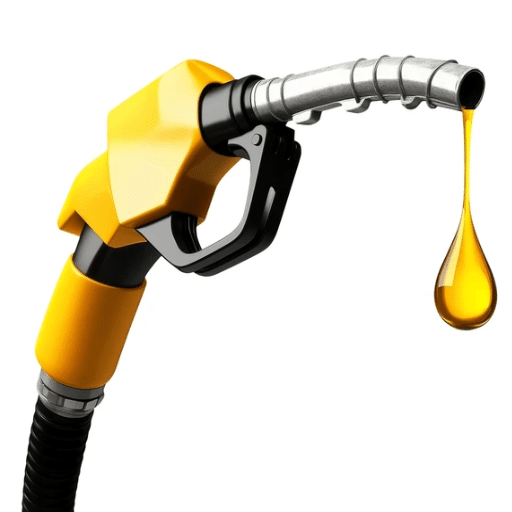
Contaminants or impurities in fuel can significantly hamper pump operation due to blocking or wear within the internal parts of the pump. Cleanliness of fuel should be ensured for the best functioning.
Operating Pressure
Operating pressure, fuel pumps are made to stay in a particular pressure range. Outside the recommended pressure, the system might start to become inefficient, or it could even be damaged mechanically.
Electrical Supply
The voltage and current for the power supply should remain constant to achieve reliable fuel pump performance. Any fluctuations within the electrical system may result in erratic performance, or they may even cause the fuel pump to fail.
Temperature Conditions
An elevated or low temperature can interfere with a fuel pump’s efficiency and lifespan, and at times its ability to deliver specified flow rates.
Maintenance Practices
Maintenance checks and prompt replacement of worn components, such as filters, will guarantee the fuel pump’s working capability while preventing system failures caused by wear or accumulation of debris.
Understanding Tank Fullness
Full fuel tanks help in keeping things running smoothly and free of anything mechanical. If the fuel tank falls to low levels too often, the fuel pumps will experience excessive wear. The pumps must be lubricated and cooled with fuel. The latter will almost certainly cause sediment and particulate matter lying at the bottom of the tank to be sucked into the fuel system when fuel levels are minimal, and this will subsequently clog the downstream filters or even damage the core components over time. Keeping the tank half-filled will greatly reduce any chance of air creeping into the fuel system and thus causing vapor lock to its corresponding deterioration in engine performance. Correct fuel level inspections and topping up at the appropriate fountains before the danger point might not only allow the pump to last longer but also increase the reliability of the whole system.
Effects of Fuel Type on Pump Performance
Fuel pump performance and longevity directly depend upon the fuel used. Good fuels with good additive packages promote clean combustion and essentially little or no deposits within the fuel system. Lower-quality or contaminated fuels may introduce impurities that increase wear in the pump and related components. Ethanol-blended fuels like E10 may attract a little water with corrosion potential for the metal parts of the pump. Higher ethanol concentrations like E85 would require pumps specifically designed to handle their corrosive nature and varying viscosity levels. Diesel has its own problems, such as microbial growth in the presence of moisture, which can clog the pumps and filters. Using the fuel recommended by the manufacturer and following a maintenance and service schedule should keep the fuel pumps working optimally and reduce the chances of premature failure.
| Fuel Type | Characteristics | Impact on Pump | Recommendations |
|---|---|---|---|
| High-Quality Gasoline | Good additive packages, clean combustion | Minimal deposits, reduced wear | Ideal for optimal pump performance |
| E10 (10% Ethanol) | Ethanol-blended fuel | May attract water, potential corrosion | Monitor for moisture-related issues |
| E85 (85% Ethanol) | High ethanol concentration | Corrosive nature, varying viscosity | Requires specially designed pumps |
| Diesel | Different viscosity, moisture sensitivity | Microbial growth potential, filter clogging | Regular maintenance and water separation |
| Contaminated Fuel | Contains impurities and debris | Increased wear, component damage | Avoid use, replace filters immediately |
Common Issues Leading to Pump Malfunctions
Basically, fuel pump malfunctions can arise from a variety of issues with improper usage, lack of maintenance, security, or environmental causes. Fuel contamination is a common problem that arises when dirt, debris, or water finds its way into the fuel tank, leading to filter clogging and pump wear. An equally common problem is the operation of the vehicle under low fuel level conditions. Having only a small quantity of gasoline in the fuel tank leads to hard-working pump conditions and overheating of the pump with ultimate premature failure. Electrical malfunctions can confound pump operations and may include wiring faults, bad connectors, and failing relays, eventually leading to the discontinuation of fuel supply to the engine. Likewise, filters not being changed can bring about the same misery for pumps by exerting undue strain upon them, causing them to overwork and deteriorate in time. Proper care, regular checks, and clean and good fuel are some measures that can help avert such a common one.
Common Malfunction Causes
- Fuel Contamination: Dirt, debris, or water in the fuel tank causing filter clogging and pump wear
- Low Fuel Level Operation: Running on empty causes pump overheating and premature failure
- Electrical Malfunctions: Wiring faults, bad connectors, and failing relays disrupting fuel supply
- Neglected Filter Changes: Clogged filters strain the pump, causing overwork and deterioration
- Inadequate Maintenance: Lack of regular inspections leading to undetected wear and damage
Safety Considerations in Fuel Pump Usage
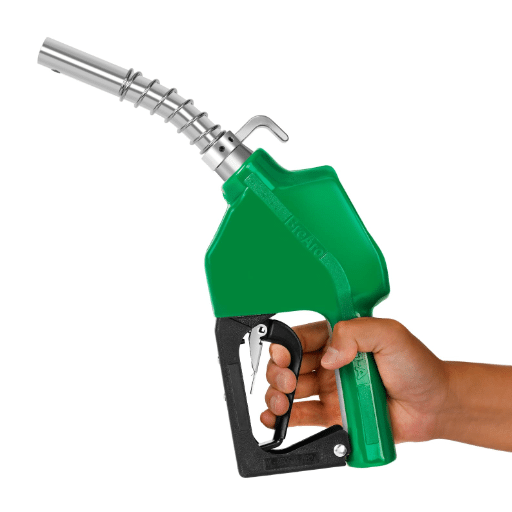
Critical Safety Measures
Certain safety measures must be observed while handling the fuel pump. In particular, the vehicle’s engine must be turned off along with any electrical devices. Creating any possible ignition source near the fuel pump is something that should be avoided. Do not smoke or even consider carrying an open flame beside the pump-the fumes are almost explosive. After refueling, tighten the fuel cap securely to prevent vapor emissions or the ingress of impurities. Regularly check your fuel pump and its accessories for any signs of wear or damage and repair them immediately if any are identified, thereby reducing the chance of hazards. Finally, use its manufacturer’s guidelines as your principle for how it is to be used and only use fuel that agrees with it.
Importance of Proper Fueling Practices
Proper fuel practices must be put in place for the safety, efficiency, and longevity of equipment or vehicles. Failure to adhere to any one of these procedures may give rise to contamination of the fuel, decrease performance, or build up hazardous conditions. Some specifics of these considerations, as cited from authoritative sources, include ensuring clean fuel free of any contamination, thin oil that meets manufacturer specifications, since contaminants will damage engine components and clog fuel systems. Inspect the lines, caps, and storage containers for any visible signs of wear to prevent leaks or vapor emissions. Secondly, never fuel in the vicinity of possible ignition sources and in a well-ventilated area to minimize fire or explosion hazards. While storing, keep fuel in approved sealed containers, keeping in mind that the longer the storage, the greater the degradation of fuel that can affect the performance. Adhering to these practices would strictly ensure reliable operation while keeping safety intact for both the user and the equipment.
Preventing Overflows and Spills
When it comes to preventing overflows and spills, a comprehensive safety approach is suggested, along with proper handling techniques. Foremost, always use equipment with spill-prevention features, such as an overfill alarm or an automatic shut-off valve, which aid in minimizing accidental overflow in transfer or refueling operations. Consider inspecting equipment regularly for wear, damage, or malfunction since compromised components could exacerbate the situation, leading to leaks or spills.
Next, put in place solid operational protocols. This involves training the employees or users in correct handling; ensuring transfer areas are level and secure; and adopting slow, gentle rates of transfer to prevent any splashes or overflows. Clean any spillages immediately, using absorbent materials, and dispose of waste according to local environmental regulations. Lastly, keep a spill response plan stocked with запас spill kits; all personnel of the company should be briefed on the procedures, ensuring incidents can be handled swiftly to reduce any environmental and safety liabilities.
Emergency Procedures at Gas Stations
Gas stations must make emergency procedures to give utmost priority to safety considerations for the people, property, and the environment. First, if there is a spill or fire, stop all fueling activities immediately. Shut down all fuel dispensing equipment and power supplies using emergency shutdown systems. Fuel spill cases will require isolating the area by placing safety cones or barricades to prevent access and eliminating all potential sources of ignition, such as open flames, smoking, or electrical equipment. Apply absorbent materials to contain the spill and then clean the area with suitable equipment.
For an active fire, implement all suppression systems available, e.g., foam or fire extinguishers rated for flammable liquids, and contact emergency services immediately. Evacuate all persons to a safe area with the victims, and allow first responders access to the crucial information upon arrival. Always have a working Emergency Response Plan, train your personnel on a regular basis, and stay in accordance with local regulations to efficiently respond to hazardous situations.
Gas Station Infrastructure
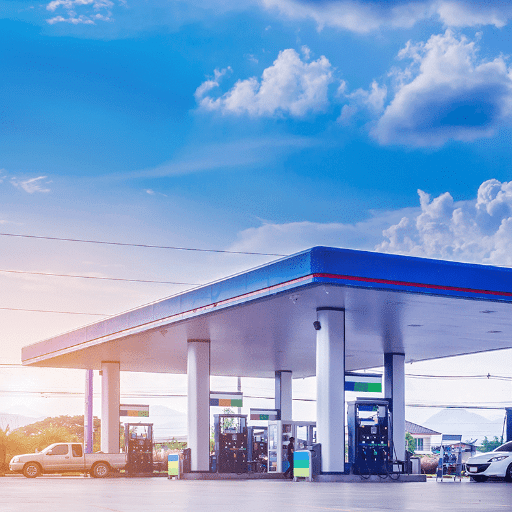
Gas station infrastructure must be carefully considered to maintain the safety of fuel storage, dispensing, and overall working operations. Important elements include:
Fuel Storage Tanks: Used underground or above ground for safe storage of gasoline, diesel, or alternative fuels.
Dispensers (Pumps): A mechanism for transferring fuel from storage tanks to vehicles while having safeguards against spills or leaks.
Vapor Recovery Systems: These recover vapors from fuel during dispensing that might damage the environment.
Piping Systems: Connected to storage tanks and pumps that allow high-pressure fuel flow while preventing leaks.
Electrical Systems: Supply power for the equipment, including explosion-proof electrical wiring and grounding to eliminate any potential ignition hazard.
Monitoring Systems: The tanks and pumps can be fitted with sensors and alarms in case of leaks, pressure changes, or system irregularities.
These components make their way toward delivering fuel safely and environmentally at their best.
Design of Modern Gas Stations
Since gas stations are modern-day service outlets, their design must incorporate advanced engineering, safety measures, and layouts to allow for maximum functionality and customer satisfaction. A major design element is the fuel pump positioning, which is laid out in a manner that ensures maximum accessibility and prevents vehicles from getting congested. Stations are laid out with USTs made of corrosion-resistant materials like fiberglass or double-walled steel to minimize chances of leakage and contamination. Venting, spill containment systems, and other fire safety and environmentally friendly features are incorporated into the site design as per governing standards.
The canopy structure is a very crucial element that ensures weather protection for customers while accommodating lighting that has to be integrated with electrical wiring. Today’s fuel dispensers feature digital interfaces and contactless payment systems, with extra enhancements such as air pumps or convenience services to help make life easier for customers. On top of that, the contemporary station design now frequently takes into account the introduction of EV charging stations to address the burgeoning needs of sustainable energy alternatives. These design considerations align closely with the most recent standards in safety, usability, and eco-conservation practices.
How Fuel Systems are Managed at Gas Stations
Fuel systems at fuel stations are managed through a dual technique of employing advanced technology and rigorous operational protocols. I ensure that storage tanks, pumps, and dispensing systems are inspected and maintained on a regular basis so as to prevent leaks or contamination. Monitoring equipment such as automatic tank gauges (ATGs) provides real-time data for fuel levels and detects anomalies, so I can take action quickly should any issues arise. Adherence to environmental regulations and safety standards remains my overriding concern to ensure timely and safe fuel distribution.
Future Trends in Fuel Pump Technology
The fuel pump industry is undergoing significant developments resulting from innovations, environmental concerns, and the need for performance improvement. The developed smart fuel pump systems, having high-end IoT-enabled sensors, can monitor fuel stations in real-time and perform predictive maintenance, thereby reducing downtime and maximizing performance through data analytics.
Also notable is the development of alternative fuel compatibilities, wherein modern fuel pumps are engineered to accommodate biofuels, hydrogen, and other types of renewable energy sources, prepared for worldwide shifts to sustainable energy solutions. Moreover, these electronic fuel delivery systems continue their journey toward precision and are ever more compelling in reducing fuel wastage and emissions.
Increasingly, giving priority to the customer means introducing automation and various new-age services such as contactless payment options or interactive user interfaces. A new-age service would create more processes that satisfy efficiency requirements or give the user a much better experience. Fuel pump technologies are, thus, evolving toward sustainability, digitalization, and high-end functionality to seamlessly address changes in energy and consumer demands.
Reference Sources
Frequently Asked Questions (FAQs)
How does a gas pump know when to stop filling your tank?
A gas pump is equipped with a level-sensing mechanism to detect the fuel level in the tank. As you pump in the fuel, the fuel level rises. Upon reaching a certain height, the level of fuel causes a variation in air pressure that gives a signal for the gas pump nozzle to shut off automatically.
What is the role of the gas pump nozzle in stopping fuel flow?
The gas pump nozzle houses a small hole that is important to determine when your tank is full: A vacuum develops if fuel reaches a point in the tank where it can block the hole, and this vacuum actuates the automatic shut-off, ceasing the flow of fuel.
Will an attendant be able to help if a gas station attendant ~gas pump doesn’t shut off?
If it doesn’t shut off automatically, then the gas station attendant can help. They will manually shut off the pump handle to stop the flow of gasoline and go on to check for any issues with the pump mechanism that may be preventing it from functioning correctly.
What happens inside the pump when it is shut down?
When the pump is shut off, it clicks as if to say, something is happening, now they have stopped the flow of gas.’ This clicking sound is caused by the mechanism inside the pump, which glides in when the fuel level in the tank goes high enough to fill the small hole in the nozzle.
How do pumps use fuel vapors to detect that the tank is full?
Pumps use fuel vapors to detect a full tank by monitoring the varying air pressure inside the fuel system. As your tank is nearly full, rising fuel levels displace air; this variation in pressure signals the pump to shut off.
What is the venturi effect inside a gasoline pump?
The venturi effect is created when fuel passes through the venturi tube of the pump, creating a pressure drop that assists the automatic shut-off. Thus, basically, the gas pump will stop filling your tank by detecting the pressure change associated with rising fuel levels.
Why does the gas nozzle click when my tank is full?
The gas nozzle clicks of its own accord when the tank is filled with fuel since the rising fuel in the tank blocks a small hole in the nozzle, which is meant for sensing changes in air pressure. The change then triggers the automatic shut-off mechanism to stop the flow of fuel.
What to do if the gas pump does not stop?
If your gas pump does not stop on its own, then release the pump handle to immediately cease pumping gas. You may then want to check for any apparent problem or see if the gas station attendant can help ensure that the pump really functions correctly.
How does air pressure influence the gas pump?
Air pressure is one of the big players in how the gas pump operates. As fuel fills your tank from outside, it changes the air in the nasal cavity. A full tank means a pressure difference that signals the pump to stop, thus preventing overfilling of your tank.

